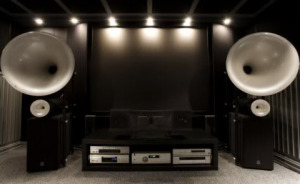 No. You read it right. The headline is correct. It’s quite common for many of us home studio mixers to think the answer behind a super-wide mix resides behind using lots of stereo tracks, while in fact that’s not true.
No. You read it right. The headline is correct. It’s quite common for many of us home studio mixers to think the answer behind a super-wide mix resides behind using lots of stereo tracks, while in fact that’s not true.
Sure, stereo instruments are a great thing, but over-abusing them it’s not a good idea.
Paradoxically, with too many stereo tracks, instead of getting a mix as wide as the Monument Valley, you are just collapsing it to the center, narrowing it and losing all the width and clarity.
Why This Happens
Straight real world example: if you pan your stereo acoustic guitar hard left and hard right, it will be all over the place, filling the whole stereo field but without a specific spot, right? Because of this, and since it’s just the same guitar part on both sides, your brain will place it roughly in the middle.
Do the same with, let’s say, a stereo synth part, rinse and repeat for any other stereo track you may have and you’ll end up having many instruments in that same centered spot. Does it make sense for you?
Now consider you’ll most likely have other stuff you’d put dead center; things like kick, snare, bass and vocals, so in the end everything will have its place in the center of the stereo field, and so all the stereo spread you’re looking for will be gone. What you’ll get is a centric-sounding mix. Not exactly what you were aiming at, I guess.
Lose Some Stereo Tracks To Get A Wider Mix
To get what’s called stereo separation and width, you need to create some distance between all the different instruments and textures that live in your song, and you can do that by using many mono tracks instead of stereo ones. I know, may sound weird but it works! Follow me…
Collapse some of your stereo tracks to mono and, by using pan pots, choose a different spot for each one of them within the stereo field. For instance, put that fuzzy synth part hard left and compliment it by placing that other melody hard right.
Of course, you don’t have to work with this hard left/right pattern all the times. You may try by just moving one of the sides of a stereo track towards the other, making that element more prominent on one side (if you move the left side towards the center, you’re actually making the instrument louder on the right side…). Just avoid keeping everything full stereo.
The whole point is to create a unique spot for each element, so that your ears can instantly target where it is coming from, separating it from the rest. And that’s it…Width!
Your brain will perceive this separation and distance and will translate it into a wider and more focused mix. Each mono element will belong just to the spot you placed it, filling a precise point of the stereo image without crowding the center, leaving it free for everything else that will live there.
The Proof Is All Around You
I’m far from being the inventor of this trick, if we want to call it that way…
In fact, this little technique is all around you. We can easily find it in all the music we listen to.
Pick some of your favorite songs, put your headphones on and spend some time listening…
Some exceptions aside, you’ll notice every element will be perfectly fitted in its focused place, without fighting to be heard. That’s mono stuff carefully placed to fill in the stereo image with different tones and colors, and that’s one of the things that makes a great mix!
In Essence
Please note I’m not saying you should forget about using some stereo tracks in your mixes!
Just keep their count a bit lower.
In pop music nowadays, it’s not uncommon to have trucks of stereo tracks, especially for keys and synths…But that’s just the way they were recorded, you won’t need to keep all of them stereo. It won’t work for the reasons above, indeed!
You’ll probably have stereo overheads for your drums and that’s fine, but then, if your mix features many other stereo parts, just pick one or maybe two of them to be full stereo, then collapse the others to plain mono (or something closer to that) and use the pan pots wisely.
Pretend to look at your stereo image the same way you’d look at the clock (with its center at 12 o’clock). Do you have different elements of your mix filling all the empty “hours” in your stereo image? Let’s say 1, 3, 7, 9 o’clock… If not, find a mono track and fill them!
In essence, remember the more mono textures you’ll be able to fit in your mix, the wider and bigger it will sound!

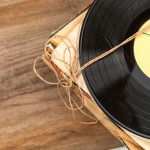
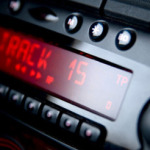
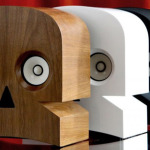
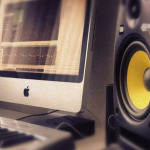
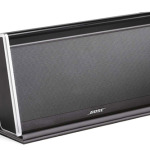
Hey,
Excuse my ignorance, but what exactly do you mean when you say “collapse” your stereo tracks to mono ?
As in change them to mono ? If so can you advise of you usually do this ?
Hello Charles! Don’t worry. We’re all here to learn. And maybe I couldn’t express myself that well… Anyway, concerning your question, with “collapse to mono” I mean things like “fold it to mono”, “make it mono”. In practice, if you have a stereo track in your DAW, with the L and R pan pots set to 100%L and 100%R (full stereo), you can easily “collapse” that track to mono by setting both of those 2 pan pots dead center. Done! That’s how you get mono. Of course you can play with pan pots a bit to find the best spot for the track within the stereo field… The basic principle here is to narrow some tracks down, avoiding leaving too many of them to full stereo. Hope that helps. Feel free to ask more if you will!